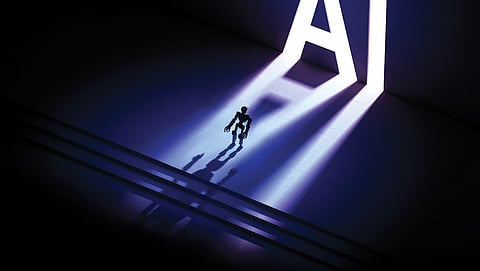

Shubham Arora, a graphic designer based in Jodhpur, Rajasthan, is worried about her job. “Artificial intelligence (AI) is now embedded in the software we use, making the work easy enough for a novice,” she says. “Through a one-line command in English, the software can produce the first draft of an idea. Our work now is to just fine tune that draft. What happens if AI of the future can provide a finished product? Many graphic designing jobs have already become redundant in the past few years,” says Arora.
“In the next decade, AI could allow computer programming possible in natural language like English, instead of progamming languages like Python or Java. It will cut IT sector jobs. Even today, AI has equipped non-IT professionals to build apps, reducing the need for a big team of coders,” says a Gurugram-based IT professional, requesting anonymity.
Employees across sectors are anxious by the disruption caused by AI—a technology that provides machines the ability to engage in cognitive activities, such as reasoning, learning and problem-solving, in a way similar to the human brain but at a much faster rate and without fatigue (see ‘Machine language’ on p26). Five years ago, the leading AI models could barely “write” a coherent paragraph in response to a command. Then, in 2022, OpenAI, a US-based AI research company, launched ChatGPT (Generative Pre-trained Transformer)—a “generative AI” tool that could create new content in response to a prompt and reuse its learnings to solve new problems.
Generative AIs have been in existence since the 1960s (see ‘Synthetic minds’ on p30), but not like ChatGPT, which has better comprehension and minimised biases. It has made generative AI technology a household name and triggered the launch of numerous similar tools—Micrsoft’s Copilot, Meta’s Llama, and Google’s Gemini, to name a few.
The possibilities with Generative AI are endless. In response to commands given in everyday language, it can write stories and music; hold a conversation in most languages on any topic; develop apps and computer programmes; fact check news articles; or browse internet to provide in-depth analysis on any issue.
Experts believe that in coming years, user interface on most device will be redesigned with AI-augmented abilities, and jobs, like customer care—up to the point of dispute resolution—could be completely AI-based.
Such scenarios could come true before the end of this decade...
This article was originally published as part of the cover story Artificially Yours in the April 16-30, 2025 edition of Down To Earth. The story captures the burst of AI usage across sectors; major players dominating the technology and their race to lead the field; privacy and legal concerns; and the environmental risks posed by AI's energy- and water-guzzling data centres